Go to All Blogs | Recommended Bird Field Guides Blogs | Asian Birding Tours | All our birding tours
This blog was updated on 19 March 2024
Indian Subcontinent:
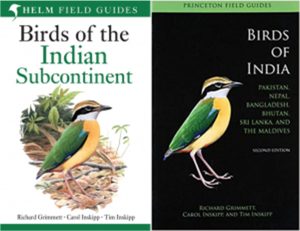
Birds of the Indian Subcontinent 2nd Edition (UK title) / Birds of India Pakistan, Nepal, Bangladesh, Bhutan, Sri Lanka, and the Maldives 2nd Edition (US title) (Grimmett, Inskipp, and Inskipp, 2016). The authors have been amazingly productive with this field guide, which is rich with information and has good plates and easily accessible range maps and descriptions opposite the plates. This book is excellent for all our Indian Subcontinent tours, including our many Indian birdwatching tours, but note that this book has also been distilled into separate country/regional guides – if you are only visiting Nepal, Bhutan, or Pakistan, for example, you can use the specific, smaller book and be less overwhelmed (further information on those below).
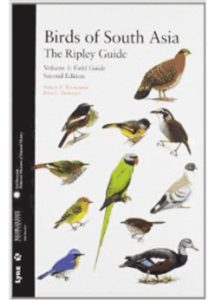
Birds of South Asia: The Ripley Guide (Volume 1: Field Guide and Volume 2: Morphology, Distribution, Vocalizations, and Taxonomy) 2nd Edition (Rasmussen and Anderson, 2012). This two-volume set covers Pakistan, India, Nepal, Bhutan, Afghanistan, Bangladesh, Sri Lanka, and west Myanmar, plus the Andaman Islands. This much-hailed work is extremely detailed and includes superb plates in the first volume and a huge amount of text in the second volume. The first volume is really the field guide, while the second volume is filled with detailed species accounts, now including sonograms. Fully revised and updated from the first edition, with many new taxonomic updates, plus the cover is now a durable soft cover rather than the old hardbound book.
India:
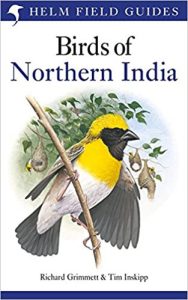
Birds of Northern India (Grimmett and Inskipp, 2003). This guide covers the central north section of India. Owing to the lack of range maps, it is a bit hard to follow at times. Nevertheless, this is a nice distillation of the Birds of the Indian Subcontinent field guide by the same authors and publishers. The Indian subcontinent region is vast and so it does help to break it into sections, as is the case in this book. This guide is great for our India: The North – Tigers, Amazing Birds, and the Himalayas tour and our India: The Northwest – Lions and Desert Birding in Gujarat tour. Note however, that this guide does not cover the northeast of India, so for our India: The Northeast – Spectacular Birds and Mammals tour that visits Assam and Arunachal Pradesh you will need the main Birds of the Indian Subcontinent field guide.
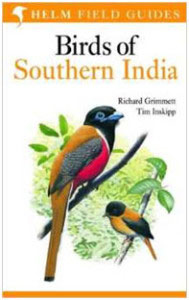
Birds of Southern India (Grimmett and Inskipp, 2020). The companion guide to the above, covering the southern half of India, based on plates from the complete Birds of the Indian Subcontinent guide. Ideal for our India: The South – Western Ghats and Nilgiri Endemics tour. The color plates are accompanied by a succinct text highlighting identification, voice, habitat, altitudinal range, distribution, and status. The text is on facing pages to the plates, for easy reference but as for the Northern India guide, the lack of maps is a hindrance. If weight limits are of concern on a trip, then this smaller guide could be useful.
Pakistan:
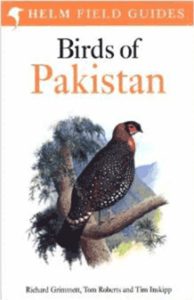
Birds of Pakistan (Grimmett, Roberts, and Inskipp, 2009). This is the subset book for Pakistan of the larger Indian subcontinent guide and follows along with the same style as the above books. Useful for anyone interested in visiting the country when it is safe to do so.
Sri Lanka:
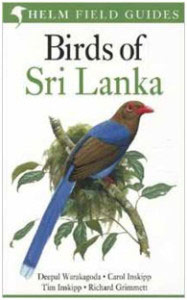
Birds of Sri Lanka (Warakagoda, Inskipp, Inskipp, and Grimmett, 2012). Another field guide condensed from the above Birds of the Indian Subcontinent, but this guide includes range maps and much more information as well as site guides, vagrants, and family paragraphs. It is excellent for anyone joining our Sri Lanka tour.
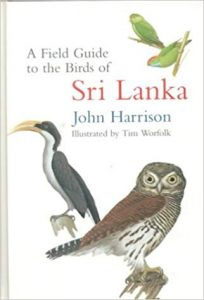
A Field Guide to the Birds of Sri Lanka (Harrison, 1999). A useful guide with decent illustrations and species information. Unfortunately, the distribution maps are tiny and the illustrations and text are not opposite each other making it a little less useful than it could have been.
Bhutan:
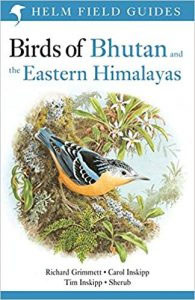
Birds of Bhutan and the Eastern Himalayas (3rd Edition) (Grimmett, Inskipp, Inskipp, and Sherub, 2019) covers all 600+ species seen in Bhutan with excellent plates and detailed range maps opposite the plates. The field guide is not only restricted to Bhutan but also includes two Indian states in the eastern Himalayas. There is a detailed introductory chapter, which includes information on bird species to expect at some of Bhutan’s better birding destinations. This guide is perfect for either of our Bhutan birdwatching tours.
Nepal:
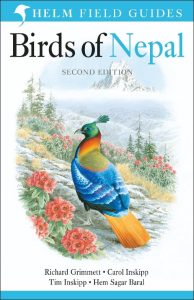
Birds of Nepal 2nd Edition (Grimmett, Inskipp, Inskipp, and Baral, 2016). This fully updated version is the most comprehensive guide to the birds of this beautiful Himalayan country and perfect if you are going to be enjoying a birding trip to Nepal. The texts have been completely re-written for this 2nd edition and many of the illustrations have been replaced. In addition, maps have been included for the first time. Every species recorded in Nepal is covered, including vagrants, with accurate distribution maps for most species. 142 color plates are featured, illustrating more than 790 species with text on facing pages for quick and easy reference. The comprehensive text covers identification, voice, habits, habitats, altitudinal range, distribution, and status.
East Asia:
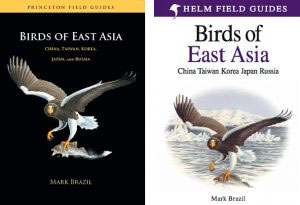
Birds of East Asia (Brazil, 2009). This book covers Korea, Japan, Taiwan, and the eastern parts of China and Russia and is a useful guide to have along when visiting this large area. The illustrations and text/maps are opposite one another and all aid identification. If you are just visiting Taiwan or Japan you might prefer one of the more focused and recently published specific guides outlined below.
Japan:
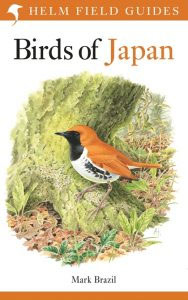
Birds of Japan (Brazil. 2018). A good recent field guide to the country and draws on the Birds of East Asia by the same author (above). This is a great accompaniment for anyone joining our Japan birding tours (but also note the new guide below).
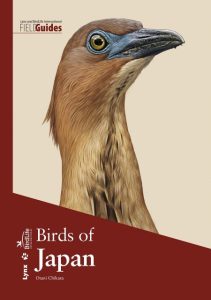
Birds of Japan (Chikara, 2019). One of the new Lynx and BirdLife International Field Guides collection and is an excellent modern guide and probably even better than the Brazil guide above, and ideal (the flexi-cover version) to use in the field. Arguably better maps, illustrations, and more taxonomically complete/current than the previous book.
China:

Birds of China (Yang and Shuihua, 2024). The book is hefty, but it needs to be as China is amazingly bird-diverse. Indeed, this field guide deals with almost 1,500 bird species! The format is good (like most modern field guides), with the distribution maps and text opposite the illustrations. The text is tiny, but understandably so as the book would otherwise be even heavier and more difficult to carry on a birding trip than it already is. The text is well laid out and informative, with habitat, behavior, distribution and voice sections. The illustrations have useful text around them pointing to key identification features, which is a good space-saver (most field guides detail ID information within the text sections).
Taiwan:
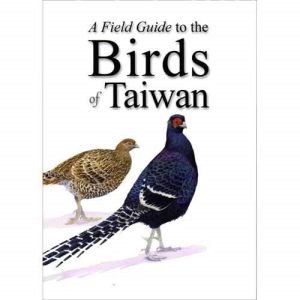
A Field Guide to the Birds of Taiwan (Hsiao, 2018). An excellent guide to the island of Taiwan and covers all 670 species found there, including all the many endemic species and subspecies. The guide contains fantastic artwork, decent distribution maps, and concise but informative text. A very good option for anyone joining our Taiwan birdwatching tours.
Korean Peninsula:
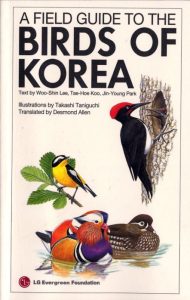
A Field Guide to the Birds of Korea (Lee, Koo, and Park, 2005). This is about the only field guide to focus on the Korean Peninsula, although it does also include areas throughout eastern/southeastern Asia. It is an easy-to-use guide with good illustrations, maps, and species information.
Russia:
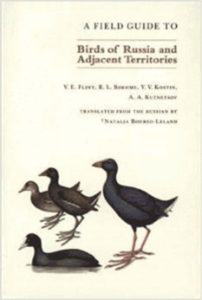
A Field Guide to Birds of Russia and Adjacent Territories (Flint, Boehme, Kostin, and Kutnetsov, 1984). This guide covers the former Soviet Union and is the only book available for this whole region in a field guide style. The plates are okay for the time it was published. The information is brief. It has range maps, but most of the taxonomy is outdated. However, this is all there is at the moment.
Southeast Asia:
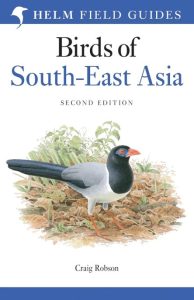
Birds of Southeast Asia 2nd Edition (Robson, 2021). This guide covers the whole of the Siam Peninsula, including Myanmar, Thailand, Cambodia, Laos, and Vietnam. There are various versions (editions, reprints, and imprints) of this guide. Most of the plates are good but some are average at best. There are unfortunately no range maps in this book which does make it tricky to use, especially for visiting birders. Overall, this is a good guide for birders visiting the region, though has now been overtaken in leaps and bounds by the Lynx and BirdLife International Field Guides collection, which have specific guides to each of the countries treated in this book (see below), meaning this book is now surplus to requirements.
Thailand:
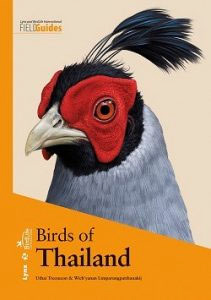
Birds of Thailand (Treesucon and Limparungpatthanakij, 2019). An updated field guide to Thailand’s more than 1,000 bird species was much needed, and this guide certainly fills the gap. The illustrations are very good, with the plates arranged opposite to the text. The maps are displayed on the plates, which works well and allows for quick checking as to whether a species occurs in an area or not. Each species has a QR code that links to the Internet Bird Collection, allowing access to a whole range of additional resources (photographs, videos, and sounds). This easy-to-use guide is the field guide to take on a birding tour to Thailand and is available as a flexi-cover (ideal for the field) or a hardcover (ideal for at home on the bookshelf).
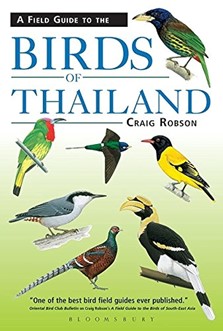
Birds of Thailand / A Field Guide to the Birds of Thailand (Robson, 2016). This updated version includes Thai names but maintains the format of the old guide, in that there are range maps, and the plates are extrapolated from the larger field guide by the same author from Birds of Southeast Asia and so faces some of the same issues as that book (out of date taxonomy and some poor illustrations). A hardcover version is available but softcover books are far more resilient for birders who use their books on trips a lot, rather than for armchair birding! This book is probably surplus to requirements now given the new (and much better) field guide shown above.
Vietnam:
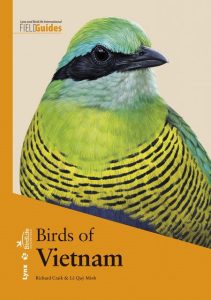
Birds of Vietnam (Craik and Minh, 2018). This is the first comprehensive modern field guide dedicated to Vietnam and it describes all 916 species in text, illustration, and distribution maps and is essential for anyone birding in Vietnam (the flexi-cover version is best for taking into the field). The guide contains over 1,900 illustrations covering all species and distinctive subspecies (with subspecies groups given full accounts, including mapping – a very useful feature for when splits occur!). As with the other books in the series, QR codes are given for each species, linking to the Internet Bird Collection gallery of photos, videos, and sounds.
Cambodia:
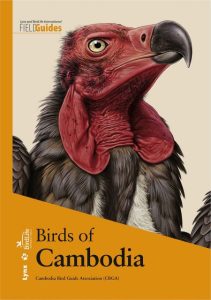
Birds of Cambodia (Cambodia Bird Guide Association, 2019). This is the first comprehensive modern field guide dedicated to Cambodia and it describes 636 species in text, illustration, and distribution maps and is essential for anyone birding in Cambodia (the flexi-cover version is best for taking into the field). The guide contains nearly 1,400 illustrations covering all species and distinctive subspecies (with subspecies groups given full accounts, including mapping – a very useful feature for when splits occur!). Following on from other books in the series, QR codes are given for each species, linking to the Internet Bird Collection gallery of photos, videos, and sounds.
Greater Sundas, Lesser Sundas, and Wallacea (Malaysia and Indonesia including Borneo):
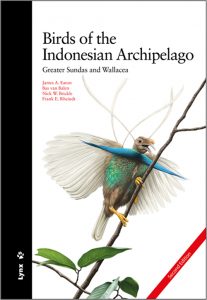
Birds of the Indonesian Archipelago: Greater Sundas and Wallacea 2nd Edition (Eaton, van Balen, Brickle, and Rheindt, 2021). The fully updated 2nd edition of this ground-breaking field guide is essential for anyone planning a birding trip to the Greater Sunda or Wallacean region of Indonesia – so Java, Sumatra, Bali, Borneo (covers all of the island of Borneo), Sulawesi, Halmahera, Lesser Sundas (e.g. Sumba, Flores, Alor, Komodo, Timor, Rote etc.) and many other islands such as Obi, Seram, Buru, Ambon, and Tanimbar to name a few. There were plenty of issues with the 1st edition of this book but many of these problems have been ironed out and the 2nd edition, available with a flexi-cover is now great for field use. The taxonomy is very different to the major taxonomical bodies of IOC and eBird/Clements and is closest to HBW taxonomy but also draws on the authors’ considerable experience in the region (including from hitherto unpublished work). Many of the “species” shown in the guide are not currently recognized by the major taxonomical bodies but each time the world lists are updated many of the new splits reflect work showcased in this guide. Andy has been living in Indonesia for the last two years and has been using this guide daily and he assures us that once you understand the layout and taxonomy it is incredibly enlightening, and it really drives you to see each different subspecies when on a particular island as the science backing up the guide is solid and is likely to result in considerable armchair ticks down the line.
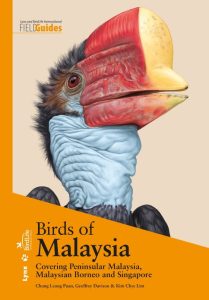
Birds of Malaysia: Covering Peninsular Malaysia, Malaysian Borneo, and Singapore (Puan, Davison, and Lim, 2020). Another example of the excellent Lynx and BirdLife International Field Guides collection. This new field guide is essential for anyone visiting Peninsular Malaysia or the Malaysian states of Sabah or Sarawak in Borneo for birding. Over 1,825 illustrations cover all species found in the region, including full accounts on subspecies, making this guide extremely comprehensive. QR codes are provided for all species to provide additional audio-visual information. Species accounts are detailed and very helpful. This book has immediately become the guide to use in Malaysia.
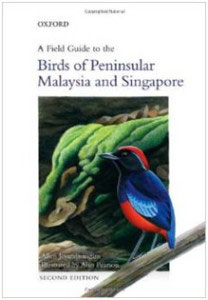
A Field Guide to the Birds of Peninsular Malaysia and Singapore 2nd Edition (Jeyarajasingam and Pearson, 2012). This is the second edition, covering all the species known to occur in the region. The artwork is generally good (but not great for many species) and there are no range maps, but the information provided is relevant and fairly comprehensive. All the plates are at the beginning with accounts following, in a more old-school style and not as good as the modern style of field guide. This book is not in the same league as the new Lynx field guides and is now not likely to be particularly useful.
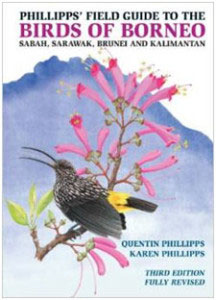
Phillipps’ Field Guide to the Birds of Borneo: Sabah, Sarawak, Brunei, and Kalimantan 3rd Edition (Phillipps and Phillipps, 2014). This is the most complete guide to the island and all its endemics. The book is filled with great information on birding sites and lore, and with good species accounts. The artwork is good and the range maps are helpful. However, the new Lynx Birds of Malaysia, or even the Birds of the Indonesian Archipelago, both detailed above, are probably the better field guides to use on a Borneo birding trip now (better plates, more up to date information etc.).
New Guinea: (falls within Asia (Indonesia) and Australasia politically so included here)
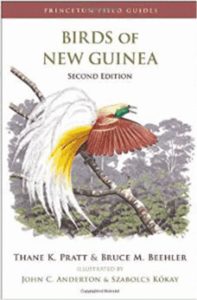
Birds of New Guinea 2nd Edition (Pratt and Beehler, 2014). The second edition is now out and is an excellent field guide whether you are planning a trip to West Papua (politically part of Indonesia) or Papua New Guinea (PNG). It is a high-quality field guide, with maps on the same page as the plates, excellent, informative text, good artwork (possibly a little too “arty” and cluttered) but generally everything one hopes for in a field guide. It is a must-have book that beautifully illustrates almost all the Birds of Paradise (there have been some very recent splits since this book was published), Paradise Kingfishers, Jewel-babblers, Fruit Doves, and more – these are the most spectacular birds on Planet Earth, so worth having a copy of the book even if you don’t plan on traveling to this large island. If you are planning to bird “Attenborough’s Paradise”, this is of course a completely essential book (but do also see below for another excellent option).
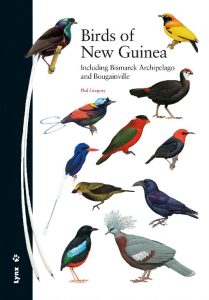
Birds of New Guinea: Including Bismarck Archipelago and Bougainville (Gregory, 2017). This is the most complete guide to the entire New Guinea region, comprising Indonesian West Papua (including the West Papuan Islands, Geelvink Bay Islands, e.g. Numfor and Biak, and Aru Islands) and Papua New Guinea and its associated islands, the Bismarcks and Bougainville. All 943 species (including 456 endemics) are covered, and detailed information is also provided for a range of distinct subspecies. There are over 1,780 excellent and clear illustrations with adjacent maps and species text opposite. The layout of the plates (clean and uncluttered) works well for visiting birders trying to get to grips with hundreds of new birds.
Philippines:
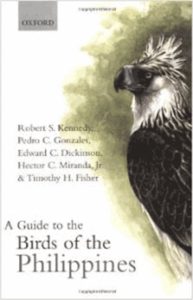
A Guide to the Birds of the Philippines (Kennedy, Gonzales, Dickinson, Miranda, and Fisher, 2000). For twenty years this was the must-have book for anyone wanting to go birding in the Philippines, however its age is now showing. While some of the plates are good, many are not and taxonomically it is now very outdated, and the guide has been superseded by the following book.
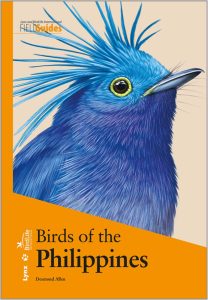
Birds of the Philippines (Allen, 2020). This is another new member of the Lynx and BirdLife International Field Guides collection. This new field guide is essential for anyone visiting the Philippines. Over 1,615 illustrations cover all species found in the region, featuring adjacent distribution maps and includes full accounts of most recognized subspecies, making this guide extremely comprehensive. QR codes are provided for all species to provide additional audio-visual information. Species accounts are detailed and are very helpful. This modern book has immediately become the guide to use in this region. The taxonomy used (as for most books in this series) follows the HBW and BirdLife International Illustrated Checklist of the Birds of the World, so might take some getting used to, but is likely to be beneficial in the long term.
Central Asia:
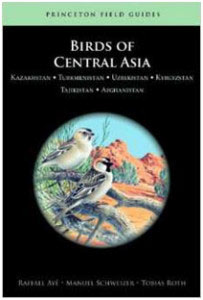
Birds of Central Asia: Kazakhstan, Turkmenistan, Uzbekistan, Kyrgyzstan, Tajikistan, Afghanistan (Aye, Scheizer and Roth, 2012). This guide covers a vast and remote area and showcases the regions’ species in 141 high-quality plates covering every species and all distinctive subspecies, along with concise text and accurate mapping.
Mongolia:
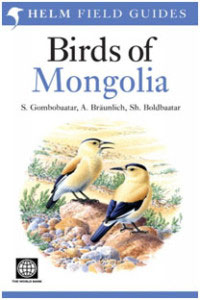
Birds of Mongolia (Gombobaatar, Leahy, and Boldbaatar, 2019). This book should be considered an indispensable guide to any birders visiting the country. Compiled by some of the country’s top ornithologists it has everything a field guide needs; good illustrations, clear distribution maps and detailed species text, but see also the other field guide below.
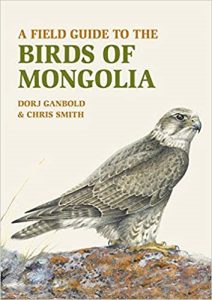
A Field Guide to the Birds of Mongolia (Ganbold and Smith, 2020). Like the above guide this book works well for Mongolia. A comprehensive field guide showcasing the 521 species recorded in Mongolia with over 154 clearly illustrated plates (these plates also have pointers on most species highlighting the key aspect of the birds’ identification). The book is well laid out with clear demarcation between different species and concise yet detailed text and good maps.
Western Asia/Middle East:
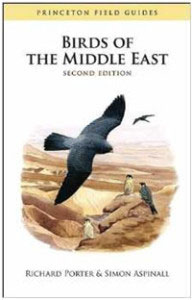
Birds of the Middle East 2nd Edition (Porter and Aspinall, 2010). This book covers Turkey, Syria, Israel, Iraq, Iran, Jordan, and the Saudi Peninsula. It has very good plates and range maps, showing migration and resident/migrant ranges. It contains good information on each species and a nice comparison chart for gulls.
We were disappointed with the app (e-guide) version of the above book because it lacked so many of the bird sounds – for bird sounds we recommend Collins/Birds of Europe app.
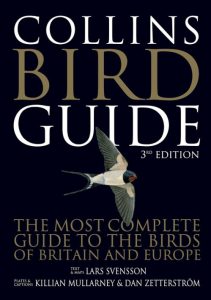
Collins Bird Guide: The Most Complete Guide to the Birds of Britain and Europe 2nd Edition (UK title) / Birds of Europe 2nd Edition (US title) (Svensson, Mullarney, and Zetterström, 2023). This excellent guide covers all of Europe, North Africa, and part of the Middle East (it is very good for Israel or our Georgia and Azerbaijan tours, for example). Excellent plates and range maps with recently updated information. The app version of this guide is also highly recommended and has all the bird calls you are likely to need. The book is published by Princeton in the United States.
